Hackney exhibition portrays 100 years of migration
- Published
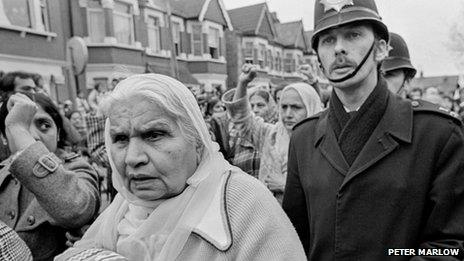
This picture of a march in Southall, organised to protest against the death of Blair Peach and racist violence, was taken in 1979
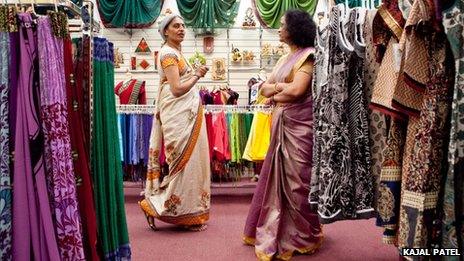
This photograph of women in an Asian shop in Leicester will also be part of the exhibition
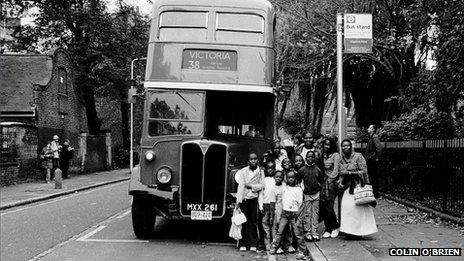
This picture of the last day of the old 38 Routemaster bus in Clapton Pond will be on show
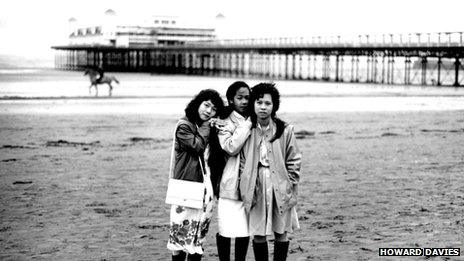
Three sisters, who were refugees from Vietnam, arrived in the UK on a family reunion programme in 1989
A new exhibition seeks to give a window into a century of migration both in and out Britain.
100 Images of Migration is being hosted by the Hackney Museum and features a diverse range of people from across the UK.
The exhibition is running in partnership with the Migration Museum Project, which hopes to create a national immigration museum.
Chaired by Barbara Roche, a former Labour immigration minister, the exhibition is vital to increase understanding of the different communities that make up Britain.
"I have a long-standing belief that the history of Britain is in part the history of migration to the UK and it goes back for many centuries and decades," she said.
"The exhibition provides a lot of information on the different stories behind migration and I'm sure people will be very affected by them."
'Wild boy'
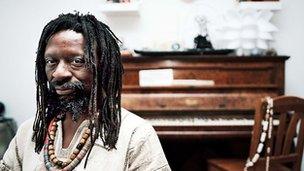
Maurice Nwokeji moved to Hackney after his grandparents died in Nigeria
Some of these stories have been ones of seeking refuge in Britain.
Maurice Nwokeji, a singer in Hackney, came to the UK in 1970 with his brother after the end of the civil war in south-eastern Nigeria.
Their grandparents, who were their carers, had both died of starvation and so the young boys were reunited with their parents in Hackney.
Mr Nwokeji had no previous memory of his parents and he remembers the initial adjustment to the UK as challenging.
"I was a nine-year old wild boy, used to running around naked in the countryside," he said.
"Wearing clothes, seeing cars and buses, that was all new and integration into Britain was initially difficult but I got used to it and grew to like it.
"I'm British, but also Rasta and an Igbo man. Similarly, Hackney is my home, but so is Akuma (in Nigeria)."
Challenge immigration debates
It is this melting pot of cultures and identities that Hackney councillor, Jonathan McShane, believes makes it an appropriate place for the exhibition to begin.
He said it would be interesting to see reactions to it in other areas, particularly because of the increasing anti-immigration rhetoric.
"I hope it will challenge people's thinking and their notions of what it means to be British," he said.
"Migration has been an entirely positive thing for Britain and if the exhibition can challenge current immigration debates, I think it will be a powerful thing."
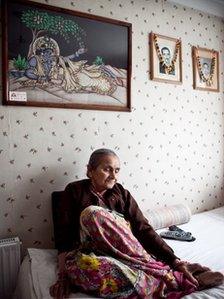
The exhibition is being hosted by the Hackney Museum
The images were captured by both professional and amateur photographers, whose backgrounds also reflect the diversity of the exhibition.
Kajal Patel has been a professional photographer since 2007, though she began photo documenting the Asian community from 2005.
Her Gujarati parents moved to Britain from Kenya and she believes it is important for British Asians to retain an understanding of Asian culture within their British identity.
"I like to capture those nuances, like when Hindus place flower garlands around photos of their deceased, which are hanging in an otherwise very British room.
"One of the ladies in the photos I gave to the exhibition actually passed away and another lady's husband recently died. It makes me feel the urgency of documenting these stories to pass on to other generations."
'Shocking' reactions
Ms Patel developed quite close contact with some of her subjects, though as seasoned photographer Colin O'Brien said, there is often little contact with people beyond the shot.
Paths can cross many years later though. Mr O'Brien took a photo of a young Chinese girl holding a balloon with a gentleman during Chinese New Year, which is in the 100 Images exhibition. It was taken in London's China Town in 1987.
"A few years ago, I had used this picture in another exhibition and a gentleman rushed up to me saying it was him and his niece in the photo," he said.
"Her name was Christine and she was now a trained dentist.
"I met her the next day and took a photo of her with the photo from 1987. Migrants have put in a lot of hard work to this country and it's shocking how some people still react to them today."